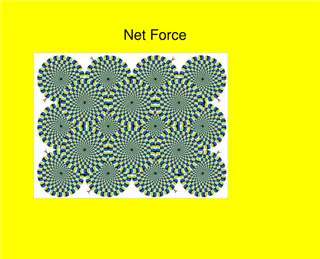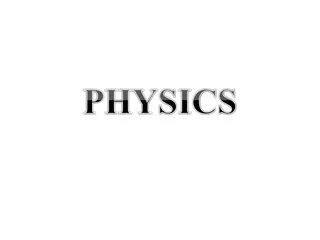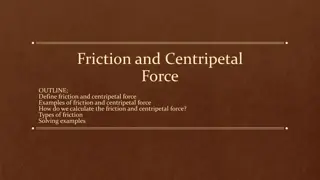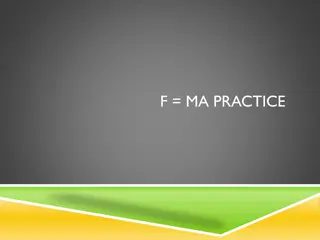Understanding Work and Force in Physics
Work is defined as a force causing a displacement on an object, involving three key components - force, displacement, and cause. Work is done when lifting a load against gravity, and can also involve changing the speed of an object. Forces are interactions that cause motion changes, and work involves a transfer of energy between objects. The relationship between work input and output is explained, highlighting that output can never exceed input. Forces are further elaborated as pushes or pulls resulting from interactions between objects.
Download Presentation

Please find below an Image/Link to download the presentation.
The content on the website is provided AS IS for your information and personal use only. It may not be sold, licensed, or shared on other websites without obtaining consent from the author. Download presentation by click this link. If you encounter any issues during the download, it is possible that the publisher has removed the file from their server.
E N D
Presentation Transcript
Work - That dirty little 4 letter word Version: 12.16.19
What is Work? Version: 12.16.19
Defining Work When a force acts upon an object to cause a displacement of the object, it is said that work was done upon the object. There are three key ingredients to work - force, displacement, and cause. In order for a force to qualify as having done work on an object, there must be a displacement and the force must cause the displacement. Version: 12.16.19
Work We do work when we lift a load against Earth s gravity. The heavier the load or the higher we lift it, the more work we do. If the force is constant and the motion takes place in a straight line in the direction of the force, the work done can be calculated by the equation W = F x d Work = Force (N) x Distance (m) 1 N m = Joule (J) Version: 12.16.19
Work Some work can be done against another force. When you do push-ups, you do work against your own weight. Some work can be done to change the speed of an object. Bringing an automobile up to speed or in slowing it down involves work. In both categories, work involves a transfer of energy between something and its surroundings Version: 12.16.19
Work cont., Work Input: Winput The work input is the work done on a machine Work Output: Woutput The work output is the work done by a machine Winput = the force on machine x the distance through which that applied force acts (input distance) Woutput = the force by machine x the distance through which the resistance force acts (output distance) Work output can never be greater than work input. Version: 12.16.19
Force Something that causes a change in the motion of an object is called a force. A force is a push or pull upon an object resulting from the object's interaction with another object. Whenever there is an interaction between two objects, there is a force upon each of the objects. When the interaction ceases, the two objects no longer experience the force. Forces only exist as a result of an interaction. Version: 12.16.19
Force cont., Input Force: Finput The force input is the force applied to the machine Output Force: Foutput The force output is the force applied by the machine Finput = minputainput Foutput = moutputaoutput or or Finput = minputg Foutput = moutputg Version: 12.16.19
Manipulating the Work Equation Work: The amount of force applied to an object over a specific distance. Measured in units of Joules (J) 1? = 1 ? ? Force: A push or pull upon an object resulting from the object s interaction with another object. Measured in units of Newtons (N) 1? = 1 ??? ?2 W= F d = = W F d x x distance/displacement: The interval between two points of position. Measured in units of Kilometers (KM or Meters (m) Version: 12.16.19























